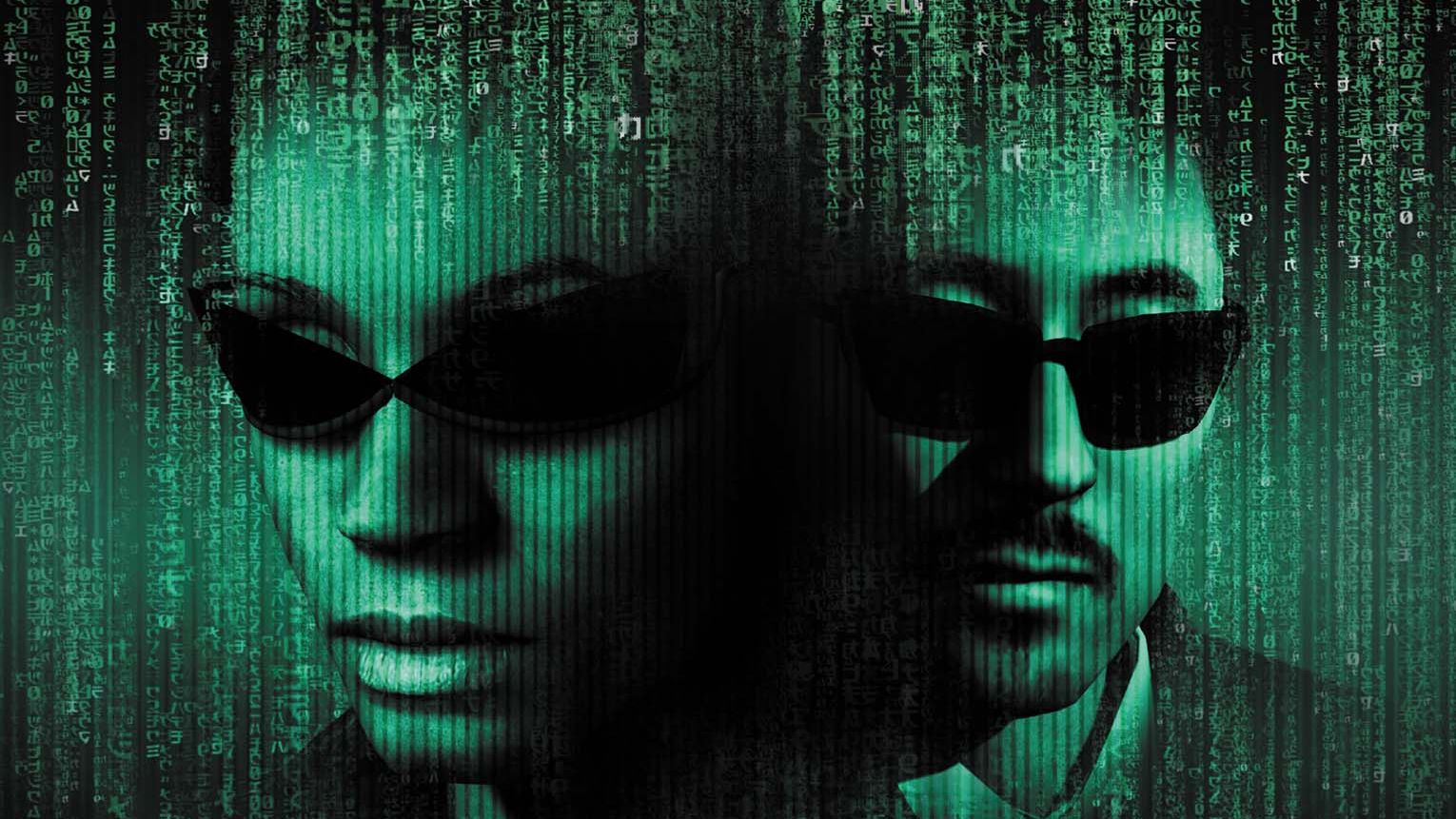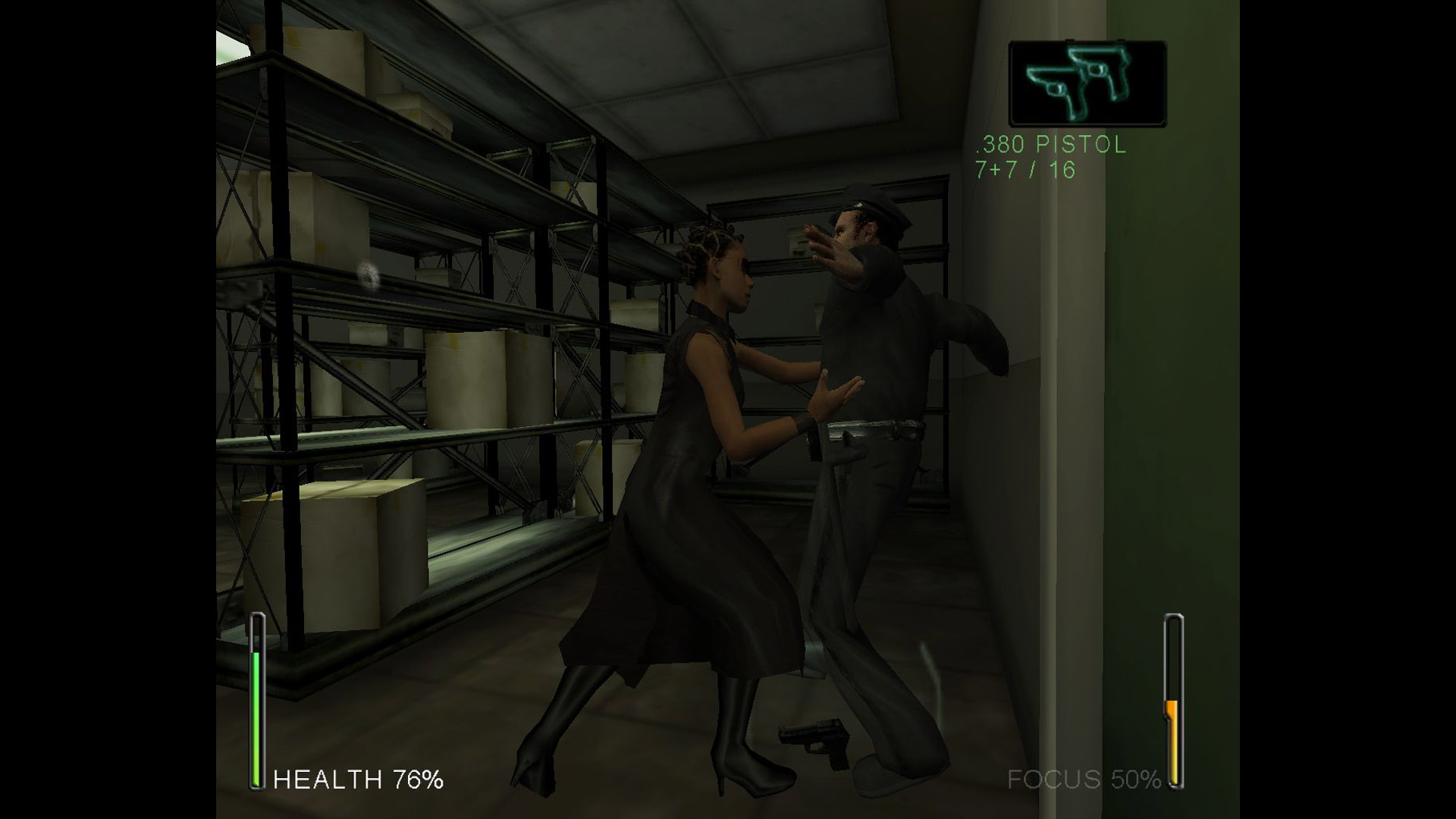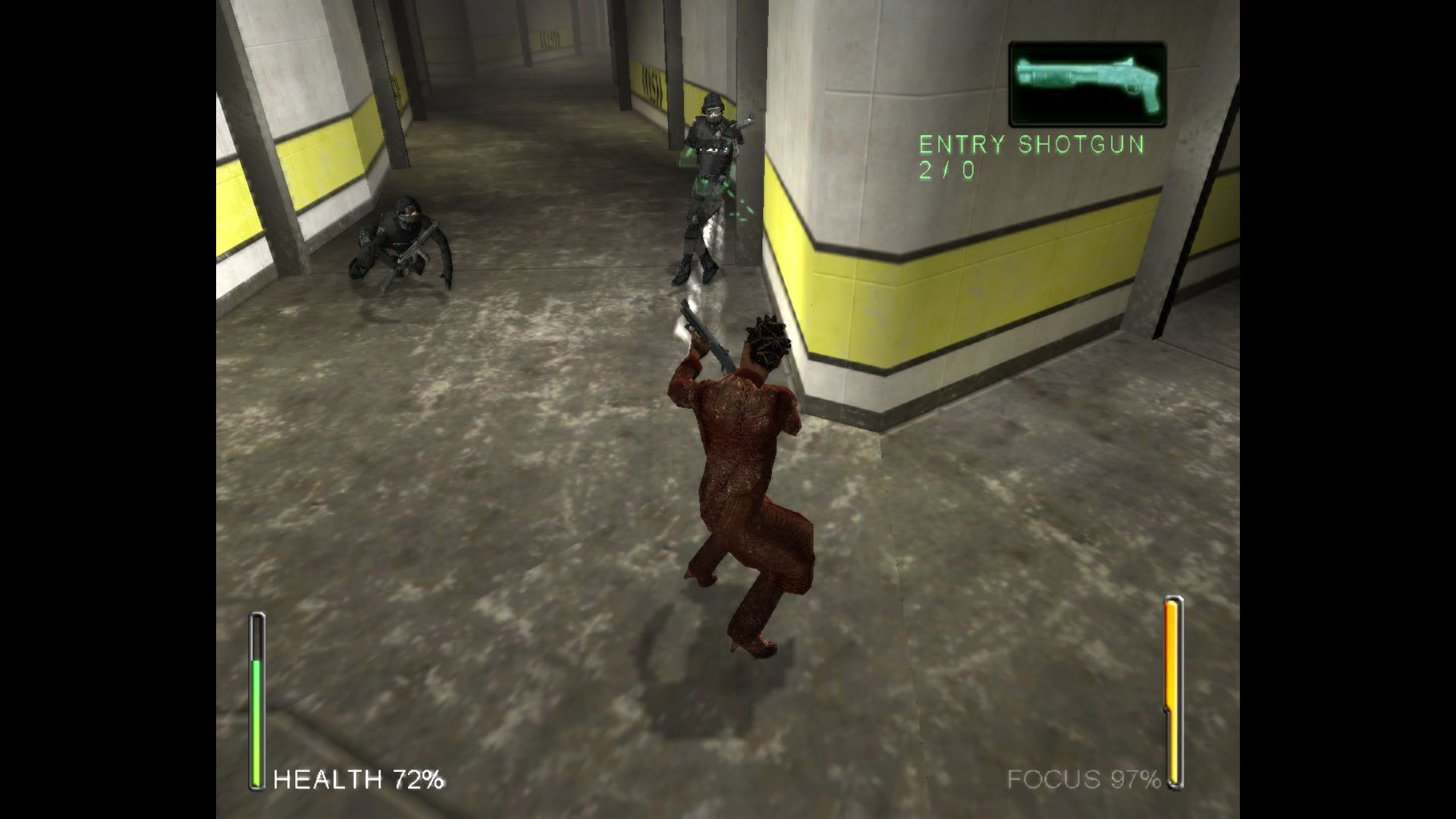Rediscovering the flawed ambition of Enter the Matrix
A flawed attempt to reinvent movie games.

In 1999 a new science fiction world was born, as relatable as it was outlandish. The Matrix was a rallying cry for anybody whose internet life had become more real to them than their daytime drudge; a freeing fiction that overlaid our own world like a sheet of graph paper and made sense of its unexplained repetitions and irregularities. As much as it was a nightmare or warning, it was also vicarious fantasy—it was pasty Keanu Reeves, asleep at his PC while Massive Attack plays in his headphones, clinging to the side of a building for dear life, eventually bending reality to his will. On some level, everybody watching wanted that call from Morpheus. To wake up, to know kung fu, to move like they do.
That’s what Enter The Matrix offered. Its title was a mission statement. Rather than mimic scenes from the movies, you could become a part of their story, interwoven with the green strands of its code.
It was born from a time when Hollywood was crowning a new wave of powerful directors, a younger generation to whom the artistry of videogames was self-evident. Peter Jackson recognised a fellow auteur in Michel Ancel, and tasked the Beyond Good & Evil designer with adapting King Kong. Guillermo Del Toro was losing himself in Ico, which he declared a masterpiece. And the Wachowskis, suddenly at the head of a multimedia empire, used their position to work with as many of their favourite artists as they could. They commissioned Neil Gaiman to write a comic; in Tokyo, Madhouse and Studio 4°C produced anime. For the interactive counterpart, they went to the developer behind a goofy sci-fi shooter they’d been fond of in the ’90s—MDK.
Hollywood bound
Shiny Entertainment’s games had long been distinguished by their imagination—from the squishy, gross-out cast of Earthworm Jim, to the hybrid RTS strangeness of Sacrifice. A strict no-sequels policy ensured oddball ideas could thrive, making the studio a spiritual precursor to Double Fine. But since the beginning, founder David Perry had his sights set on Hollywood—hence the ‘Entertainment’ suffix, which he believed would make the company appear more worldly to film production companies.
He got his wish, and then some, with The Wachowskis—who came to game development with a story already written, and heads full of ideas for specific sequences, down to the level design. It sounds stifling for a studio used to flights of fancy, and there’s no doubt whose vision Enter The Matrix delivers on—as a longtime Shiny Entertainment fan in 2003, I played through the entire game without once clocking the developer behind it.
That tight directorship, however, is the very reason it’s a game worth returning to. Enter The Matrix formed part of a bold experiment to connect The Matrix’s many spin-offs to the movies.
This was not like the expanded universe of Star Wars—the mass of licensed novels, cartoons, and games so sprawling and disconnected that Disney felt comfortable dismissing the lot from canon in 2012. Instead, the Wachowskis oversaw an interdependent story that lent each part equal importance.
Keep up to date with the most important stories and the best deals, as picked by the PC Gamer team.
Switch in perspective

For The Animatrix, the Square studio behind Final Fantasy: The Spirits Within created the Final Flight of the Osiris—a photorealistic CG short that followed a doomed hovership crew much like Neo’s. Their discovery, of a huge machine army drilling down into Zion, precipitated the events of The Matrix Reloaded.
Then, Shiny’s game ran parallel to the film, embellishing and expanding on plot points referenced on-screen. And after the conclusion of the trilogy, a Monolith-developed MMO officially took the story forward into the future—at least until 2009, when The Matrix Online was shut down.
The Wachowskis wrote and directed an hour’s worth of cutscenes for Enter The Matrix, and it’s those that still represent its key draw. For once a game adaptation was not a poor relation to its cinematic inspiration. Instead it was merely a switch in perspective, from the Nebuchadnezzar to another crew caught up within the machinations of Morpheus.
Or at least, that was the idea. The very first level of Enter The Matrix reveals a tension in that premise. You’re planted in a US post office to pick up a tape containing the last transmission of the Osiris, so that you can hand it over to Zion—literally passing the baton from one medium to another. Yet, before you can leave that post office, the shutters come down and you’re pushed into a lobby firefight, pinwheeling out from behind pillars as bullets strip the marble from the walls.

It’s a clear echo of the standout action scene from the original film (for which Perry turned down a game deal, not anticipating the phenomenon that would follow).
Enter The Matrix was a product of two different urges—one to dive from the rooftop after the established spectacle of the movies, and another to follow its own path. For the most part, it gets away with attempting both, presenting different angles on sequences familiar from the movies.
When Niobe catches Morpheus on the bonnet of her car during the climactic freeway fight of The Matrix Reloaded, the moment functions nicely as a surprise twist. Niobe has volunteered her crew to go chasing after Morpheus rather than stay behind to defend Zion, so being there to save his life validates her choice.
Playing the game afterwards, however, fleshes out that arc with powerful effect. As Niobe or Ghost, you drive that car up the freeway, fending off cops and Agents so that you can show up for Morpheus—knowing exactly how important your role will be.
It’s an approach that gels nicely with the Matrix sequels’ less Messianic take on The One. If Neo is fated to save mankind, the story goes, it’s not a foregone conclusion—it’ll only happen with the help and sacrifice of others. As in the Wachowskis’ transmedia empire, every part is of equal importance.
Tight schedule

Oddly, there are other times in this shared story where it feels as if cinema-goers have been robbed of spectacle so that Enter The Matrix players can enjoy it instead. At one point in Reloaded, Morpheus sets up a heist of sorts. Niobe’s crew is tasked with blowing up a power plant to prevent a security system being triggered—but the movie cuts straight to the explosion. It’s only Enter The Matrix players who wind their way through the plant, shutting off the lights and taking down snipers in the dark.
It might be the one time in history that a film has been compromised for the benefit of its licensed game, rather than the other way around.
The game commits to this split-perspective story still further by offering an opening choice between Ghost and Niobe as protagonist. While Ghost has a nice sideline in Hume quotes, Niobe’s love triangle with Morpheus and Zion’s commanding officer makes her the more intriguing choice—not to mention her red faux-crocodile skin trench coat, by some distance the most detailed and mesmerising thing in the game. The pair’s shared path diverges at certain points, usually when collaborating on something. As a teenager playing Ghost, I distinctly remember shooting out the front wheel of an aeroplane during takeoff with a sniper rifle. Now, as Niobe, I find myself sprinting through hangars to catch up with the grounded vehicle.
It’s these high level, structural quirks that are still worth celebrating in Enter The Matrix. The fighting’s decent enough, too. You’ve got a finite amount of bullet time which is topped up by kills—chain enough together and you’ll have a constant trickle of slo-mo throughout the fight. Ammo is scarce, pushing you to swap often between shotguns, uzis, and a basic take on martial arts. In short, it keeps you moving, just as Neo and Trinity did in that lobby.

What’s more, Shiny smartly committed to contextual moves long before that became the industry standard for action games. A sidestep towards a wall while in bullet time becomes a cartwheel, during which you can empty half your clip or switch to another weapon. At its best, it’s smooth and instinctive.
That said, it can be tempting to forgive old games too much in lieu of putting them in their proper context. You know what else came out in 2003? Max Payne 2. Remedy had outmanoeuvred the Wachowskis, making their aesthetic interactive years before it was officially licensed. Shiny, meanwhile, never quite left the ’90s—too often designing levels as roomy, blocky interiors rather than the spatial combat puzzles the third- person action genre was perfecting.
The developer clearly suffered, too, from the hard limits of their project. While the Wachowskis threw money and support at Enter The Matrix, it still had to come out when The Matrix Reloaded did, imposing a tight two-year development schedule that left the game janky. It was a depressingly familiar problem for a project that had otherwise broken free from the low expectations of licensed movie games.
Afterwards, Shiny worked on The Matrix: Path of Neo. Though built on the same combat, it was the opposite of Enter The Matrix—a greatest hits compilation that pulled all of the most famous scenes from the films. The Wachowskis had capitulated to fans who simply wanted to waggle a controller while the movies played out once more before their eyes. By contrast, Enter The Matrix stands as a flawed monument to ambition, and perhaps even a model for developers and directors to follow and improve upon in the golden age of the cinematic universe.
Jeremy Peel is an award-nominated freelance journalist who has been writing and editing for PC Gamer over the past several years. His greatest success during that period was a pandemic article called "Every type of Fall Guy, classified", which kept the lights on at PCG for at least a week. He’s rested on his laurels ever since, indulging his love for ultra-deep, story-driven simulations by submitting monthly interviews with the designers behind Fallout, Dishonored and Deus Ex. He's also written columns on the likes of Jalopy, the ramshackle car game. You can find him on Patreon as The Peel Perspective.

